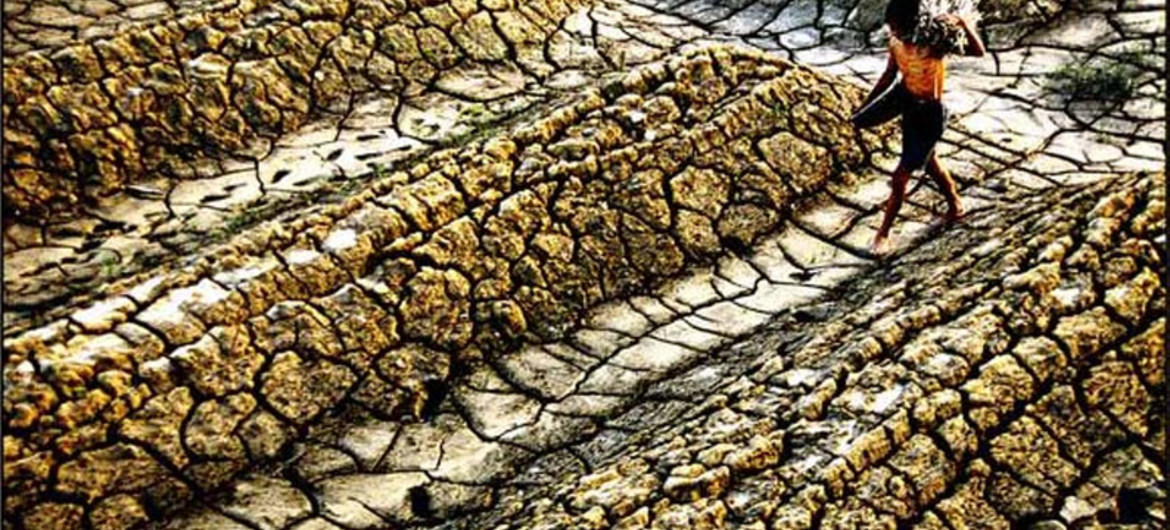By: Alan Harman
Degraded dryland in Vietnam. (UN photo by Binh Thuan)
Worsening land degradation caused by human activities is undermining the well-being of two fifths of humanity, driving species extinctions and intensifying climate change.
The Intergovernmental Science-Policy Platform on Biodiversity and Ecosystem Services (IPBES) report says land degradation cost the equivalent of about 10% of the world’s annual gross product in 2010 through the loss of biodiversity and ecosystem services.
It is also a major contributor to mass human migration and increased conflict.
The report, which draws on more than 3,000 scientific, government, indigenous and local knowledge sources, says rapid expansion and unsustainable management of croplands and grazing lands is the most extensive global direct driver of land degradation.
Report co-chairman Prof. Robert Scholes of South Africa says degradation of the Earth’s land surface through human activities is pushing the planet towards a sixth mass species extinction.
“Avoiding, reducing and reversing this problem, and restoring degraded land, is an urgent priority.”
Underlying drivers of land degradation, says the report, are the high-consumption lifestyles in the most developed economies, combined with rising consumption in developing and emerging economies.
This, with population growth, can drive unsustainable levels of agricultural expansion, natural resource and mineral extraction, and urbanisation – leading to greater levels of land degradation.
By 2014, more than 3.7 billion acres of natural ecosystems had been converted to croplands. Less than 25% of the Earth’s land surface has escaped substantial impacts of human activity – and by 2050, the report estimates this will be less than 10%.
Crop and grazing lands cover more than one third of the Earth´s land surface, with recent clearance of native habitats, including forests, grasslands and wetlands.
Increasing demand for food and biofuels will lead to increased nutrient and chemical inputs and a shift towards industrialised livestock production systems, with pesticide and fertiliser use to double by 2050.
This can be avoided, the report says, through yield increases on existing farmlands, shifts towards less land-degrading diets, including more plant-based foods and less animal protein, and reductions in food loss and waste.
IPBES chairman Robert Watson says the global community of experts has delivered an urgent warning, with clear options to address the damage.
“Land degradation, biodiversity loss and climate change are three different faces of the same central challenge,” he says. We cannot afford to tackle any one of these three threats in isolation – they each deserve the highest policy priority and must be addressed together.”
The report says deforestation contributes about 10% of all human-induced greenhouse gas emissions. Land degradation between 2000 and 2009 was responsible for annual global emissions of up to 4.4 billion tonnes of CO2.
Scholes says by 2050 is likely land degradation, together with climate change, will have forced 50 million – 700 million people to migrate. Global crop yields are seen falling an average 10%, and by up to 50% in some regions.
“Most degradation will occur in Central and South America, sub-Saharan Africa and Asia – the areas with the most land still remaining that is suitable for agriculture,” Montanarella says/
The report says many well-tested practices and techniques can avoid or reverse degradation.
In croplands, these include reducing soil loss and improving soil health, the use of salt tolerant crops, conservation agriculture and integrated crop, livestock and forestry systems.
In rangelands with traditional grazing, maintenance of fire regimes, and the reinstatement of local livestock management practices and institutions have proven effective.
Successful responses in wetlands include control over pollution sources, managing the wetlands as part of the landscape, and reflooding wetlands damaged by draining.
On average, the benefits of restoration are 10 times higher than the costs, and, for regions such as Asia and Africa, the cost of inaction is at least three times higher than the cost of action.







